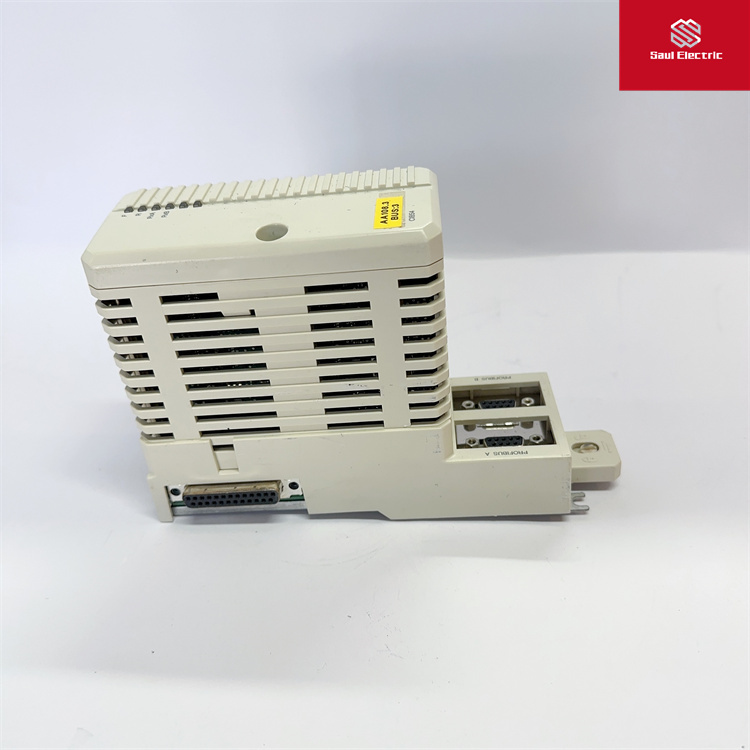



CI854BK01 3BSE069449R1 是ABB生产的AC 800M通信接口模块,它支持PROFIBUS DP-V1系列通信协议,具备以下特性和优势:
高速通信:支持PROFIBUS DP,这是一种高速多用途总线协议,传输速度可达12Mbit/s,适用于连接现场设备如远程I/O、驱动器、低压电气设备和控制器 。
双通道设计:模块包含两个PROFIBUS端口,可用于实现线路冗余,提高通信的可靠性 。
支持主站冗余:除了线路冗余,CI854B还支持PROFIBUS主站冗余,增强了系统的容错能力 。
热插拔功能:模块支持热插拔,方便在不重启系统的情况下更换模块,减少维护时间 。
与HI控制器兼容:可以与HI(高性能)控制器一起使用,提供更高效的控制解决方案 。
环境适应性:模块设计适应工业环境,工作温度范围为+5至+55°C,储存温度范围为-40至+70°C,具有2级污染防护和IP20防护等级 。
符合国际标准:拥有CE标志,符合RoHS标准,确保了产品的环保和健康安全要求 。
国际认证:拥有包括ABS、BV、DNV-GL、LR在内的船用证书,表明产品符合海洋使用标准 。
WEEE合规性:符合WEEE指令,减少了电子废物对环境的影响 。
此模块的通信能力、冗余设计和环境适应性使其成为工业自动化领域中连接和控制现场设备的理想选择。
CI854BK01 3BSE069449R1 模块的热插拔功能允许用户在不关闭系统电源的情况下,对模块进行更换或升级,从而提高了系统的灵活性和维护的便捷性。这种设计对于需要24小时不间断运行的工业系统尤为重要,因为它可以减少系统停机时间,提高生产效率。
热插拔功能的实现通常涉及以下几个方面:
电源管理:在插入或拔出模块时,系统必须能够控制电源,以避免产生过大的瞬态电流,这种电流可能会对系统造成损害。通过使用如PTC电阻或MOS管等元件来限制电流,实现电源热插拔 。
信号隔离:在模块断电之前,需要适当地终止所有通信,以防止信号线上产生瞬变电压,这可能导致系统通信异常。信号热插拔功能通过在信号线上串联缓冲器来实现 。
硬件设计:模块和系统的设计必须支持热插拔操作,这通常意味着使用特殊的连接器和电路设计来吸收插入和拔出时产生的机械和电气冲击 。
热插拔功能对系统稳定性的影响主要表现在:
提高可靠性:通过允许不中断系统运行的情况下更换模块,热插拔功能提高了系统的可靠性和容错能力 。
减少维护时间:热插拔功能减少了系统停机时间,因为维护和模块更换可以在系统运行时进行 。
长期影响:如果热插拔设计不当,可能会因为反复的插拔操作导致系统组件的损坏,影响系统的长期稳定性 。
CI854BK01 3BSE069449R1 模块的热插拔功能使其成为需要高可靠性和持续运行的关键工业应用的理想选择。然而,为了确保系统的长期稳定性,设计时必须考虑到热插拔操作可能带来的所有潜在影响,并采取适当的措施来保护系统免受损害 。


CI854BK01 3BSE069449R1 is an AC 800M communication interface module produced by ABB. It supports the PROFIBUS DP-V1 series communication protocols and has the following features and advantages:
High-speed communication: Support PROFIBUS DP, a high-speed multipurpose bus protocol with transmission speeds of up to 12Mbit/s, suitable for connecting field devices such as remote I/O, drives, low-voltage electrical equipment and controllers.
Dual channel design: The module contains two PROFIBUS ports, which can be used to achieve line redundancy and improve the reliability of communication.
Support for master station redundancy: In addition to line redundancy, the CI854B also supports PROFIBUS master station redundancy, enhancing the fault tolerance of the system.
Hot swap: The module supports hot swap, facilitating the replacement of a module without restarting the system and reducing the maintenance time.
Compatible with HI controllers: Can be used with HI (High performance) controllers to provide a more efficient control solution.
Environmental adaptability: The modules are designed for industrial environments with operating temperatures ranging from +5 to +55°C and storage temperatures ranging from -40 to +70°C, with Level 2 pollution protection and IP20 protection.
Comply with international standards: with the CE mark, in line with RoHS standards, to ensure the environmental protection and health and safety requirements of the product.
International certification: With Marine certificates including ABS, BV, DNV-GL, LR, indicating that the product meets the standards for Marine use.
WEEE compliance: Compliance with the WEEE Directive reduces the environmental impact of e-waste.
The module's communication capabilities, redundant design and environmental adaptability make it ideal for connecting and controlling field equipment in the field of industrial automation.
The hot swap function of the CI854BK01 3BSE069449R1 module allows users to replace or upgrade the module without turning off the system power, which improves system flexibility and ease of maintenance. This design is particularly important for industrial systems that require 24 hours of uninterrupted operation, as it reduces system downtime and increases production efficiency.
The implementation of the hot swap function usually involves the following aspects:
Power management: The system must be able to control the power supply when a module is inserted or unplugged to avoid excessive transient currents that can cause damage to the system. The power supply is hot-swapable by using components such as PTC resistors or MOS tubes to limit the current.
Signal isolation: Before the module is powered off, all communication needs to be properly terminated to prevent transient voltage on the signal line, which can cause abnormal system communication. The signal hot swap function is realized by connecting the buffer in series on the signal line.
Hardware design: Modules and systems must be designed to support hot-swappable operation, which usually means using special connectors and circuit designs to absorb mechanical and electrical shocks during insertion and withdrawal.
The impact of hot swap on system stability is as follows:
Improved reliability: By allowing module replacement without interrupting system operation, hot swap improves system reliability and fault tolerance.
Reduced maintenance time: Hot swap reduces system downtime because maintenance and module replacement can be performed while the system is running.
Long-term impact: If the hot swap is improperly designed, repeated hot swap operations may damage system components, affecting the long-term stability of the system.
The hot swappable capability of the CI854BK01 3BSE069449R1 module makes it ideal for critical industrial applications that require high reliability and continuous operation. However, in order to ensure the long-term stability of the system, the design must take into account all potential impacts that can be brought about by the hot swap operation and take appropriate measures to protect the system from damage.


18030183032


